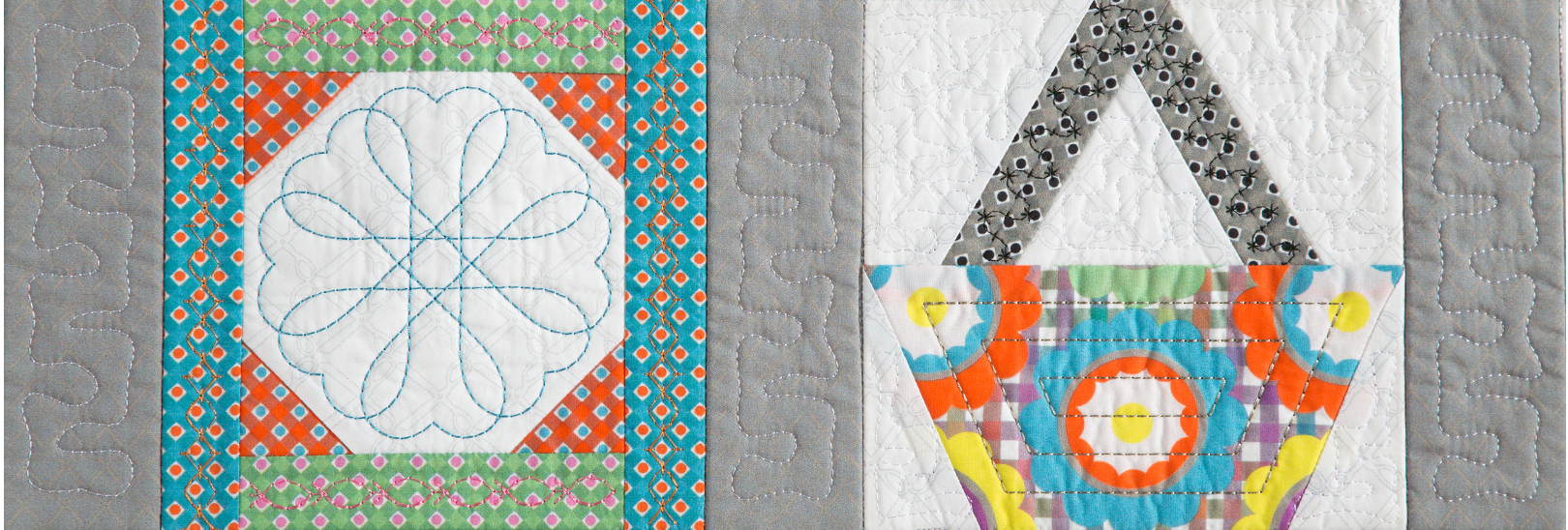Embroidering t-shirts are so simple on a multi-needle machine. Through my five years teaching on the road with my Stitching Sister we have discovered many interesting scenarios regarding hooping t-shirts. Single needle embroidery machine owners have to be creative when they hoop and embroider a t-shirt. We teach some out of the ordinary techniques such as using tape, clips, Hoop Guards, spray adhesive and pins. Some people use all of the items listed! If you are fortunate enough to own a multi-needle embroidery machine, hooping and embroidering a t-shirt is very simple.
Step1. Select the embroidery design and decide on the appropriate size hoop. T-shirts should not be embroidered on a hoop larger than a 5” x 7” for optimal quality. For example: stitching jumbo letters or multiple lines of text on a stretchy knit fabric is not ideal. Make your job a bit easier and re-size the design to fit in a 5” x 7” or 4” x 4” hoop.
Step 2. Stabilizer rule: If it stretches, cut it out. It’s that simple. Stabilize the wrong side of the t-shirt in the area to be embroidered with a fusible no-show or poly-mesh cut away stabilizer. Cut the stabilizer larger than the hoop you plan to use. For a 4” x 4” hoop, cut a 8” square of fusible stabilizer. (Poly mesh and no-show are interchangeable terms.) Poly mesh stabilizer is available in fusible and non-fusible in white, natural or black colors.
Step3. Do not over stretch the fabric when placing it in the hoop. Once the fusible poly mesh is ironed in place, carefully hoop the fabric taut without over stretching. Mark the area to be embroidered with a target sticker; cross hair centered in the hoop. The fabric should be tight like a drum, without ripples. Feel underneath the hoop to make sure excess fabric is not caught in the hoop. Remove the target sticker after it is aligned with the needle bar.
Step4. DO NOT FLOAT! (To float fabric is to hoop stabilizer and spray adhesive to the stabilizer, then add the garment or fabric on top of the hoop. The fabric is not actually contained in the hoop.) I hear so many embroiderers talk about floating the garment or fabric and floating the fabric does not create any tension on the fabric.
Embroidery machine manufacturers make hoops because it is the best way to stabilize the fabric. Yes, there are many instances when you might need a specialty hoop and we are glad to have them. On a daily basis, hoop properly and your embroidery will look professional.
Step 5. Use water soluble stabilizer on top of the fabric to keep the thread from sinking into the knit fabric. Hold the stabilizer in place with the basting file.
Step 6. Use the free-arm ability to easily embroider tubular items such as t-shirts, sweat shirts and onesies. Insert the neckline over the machine throat and let the body of the shirt hang below the throat. Get creative if the design is more vertical, you can use the sleeve to fit around the hoop’s extended attachment.
Want to learn more about stitching professionally? Take advantage of this $10 coupon for my Craftsy class, How to Start a Machine Embroidery Business.





6 COMMENTS
Rita McGuire
10 years agoWhen I click on the Craftsy link the coupon link doesn’t work
eileenroche
10 years agoOops! Give me a few hours – I’ll get with Craftsy and post the correct link later today. Thanks for telling me!
Lauren
10 years agoThanks for sharing the step-by-step process of embroidering t-shirts without using a multi-needle machine!
Sylvia Mitchell
10 years agoyour web site is very interesting and for a new embroider I get a lot from it. Thanks for your help.
Drew
10 years agoThis is great information for someone who doesn’t have their own machine. Thanks so much for sharing!
Bruce
8 years agoI agree, this is very helpful to someone who does not have their own machine. The steps is also easy.
Bruce, https://www.printavo.com